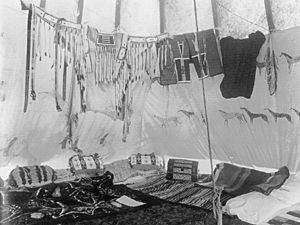When 'camping' in the winter, especially in northern climates, a heated tent, is probably the best option, however this poses its own unique set of problems; Many of you have probably read the articles in the British press of poor souls who have unfortunately succumb to Carbon monoxide poisoning, while either using a stove or a gas lamp, or even a heater inside of a tent, others have come to more incandescent harm, by the accidental setting fire to the tent while unfortunately being still inside. Both of these outcomes are shall we say, highly undesirable. When looking at using a tent and a heater look at the positioning of both, for the tent a nice stable flat area, and for the heater, a position where it won't set the walls on fire. Next look at the amount of ventilation that the tent has, if you are using a heater, the usual small vents provided by most tents will i'm afraid be sorely lacking, make sure that the spent combustion gases are 'easily' expelled, and don't build up to cause a lethal environment. A cheap monoxide detector is also a good investment, as this may give you advanced warning, but shouldn't be relied on. Keep the heater away for the tent sides, and in a position where you are unlikely to roll over, in the night and tip it over the addition of a small roped off area can be easily fashioned. Usually the larger types of tents are more suitable for this type of camping, as they provide a greater internal air space, and greater ventilation options. When purchasing any tent you intend to use a heater within, ask about the material, and its flame retardant properties, and if it can be flame-proofed, look at the size of the ventilation vents and see if these are of adequate size. most of all, if in doubt, don't risk it, and use instead greater insulation on yourself and for the tent.
Think about the type of environment you are taking your tent into, and then think about its shape; Snow as a snowflake weights practically nothing, but a heavy snow fall can easily deform and squash your tent, if allowed to settle on the canvas, The steeper the sides the less likely that snow will settle on it.

Think Teepee for instance, this has the ideal shape and the internal reinforcements to stop heavy snow fall squashing the sides of the roof while the raised entrance stops snow from falling into the internal space, and also stops snow from cutting off the ventilation entering into the tent, the hole at the top if correctly sized produces a chimney effect drawing the spent fumes, smoke and gasses out of the teepee, and drawing in fresh air from the outside. Note how the seams run roughly Horizontally and not vertically, this give it a much better resistance to seeping through the seams, in really wet weather. A dome is also a very practical shape, as the curvature repels the bold up of snow on the top of you tent.


Think about snow against the walls, and if needed can you reinforce then with wooden sticks or branches (the vertical brace poles, in the above picture add stability to the walls of the shelter.), and an inner wall provides a area of trapped air between the inside of the tent, and the wall of the tent fabric, and also prevents the sides being brushed against and drawing moisture through the material.
Pictures courtesy of Wikipedia public imaging licence
North face tent courtesy of North Faces website. All rights of image ownership acknowledged







